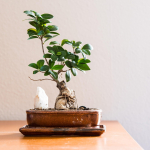An emergency fund serves as a financial safety net, providing peace of mind during unexpected challenges. Establishing this fund is crucial, as it can protect you from debt and ensure stability in turbulent times. By understanding how much you need and implementing effective strategies to build your fund, you increase your financial security significantly. In this guide, we will explore the importance of an emergency fund, how to determine the right amount, and offer tips for both building and maintaining it effectively.
Importance of an Emergency Fund

An emergency fund serves as a financial safety net in times of unexpected challenges, such as job loss, medical emergencies, or urgent home repairs. Understanding its importance is crucial for maintaining financial stability. Here’s why you need an emergency fund:
- Peace of Mind: Knowing you have funds available for emergencies reduces stress and anxiety about unforeseen expenses.
- Financial Independence: An emergency fund allows you to avoid high-interest debt, such as credit cards, when unexpected costs arise.
- Preparedness: Life is unpredictable. Whether it’s a sudden car breakdown or a health issue, having a fund ready means you can handle these situations without financial panic.
- Establishes Financial Discipline: Regular contributions to your emergency fund encourage better budgeting and savings habits.
In summary, an emergency fund not only protects you from financial distress but also empowers you to face life’s surprises with confidence. Prioritizing its establishment is a vital step towards achieving overall financial security.
How to Determine the Right Amount for Your Fund

Determining the right amount for your emergency fund is crucial for ensuring your financial security. Here are some key considerations to help you decide:
- Three to Six Months of Expenses: Common advice suggests saving three to six months’ worth of living expenses. Calculate your essential monthly expenses, including:
- Rent or mortgage
- Utilities
- Groceries
- Insurance premiums
- Transportation
- Personal Circumstances: Your specific situation may require adjustments. Consider factors such as:
- Job Stability: If your job is less stable, aim for closer to six months.
- Family Size: Larger households may need a higher fund.
- Health Costs: If you have ongoing medical expenses, factor these into your calculations.
- Inflation and Future Needs: Keep in mind that costs may rise. Periodically reassess your fund to ensure it meets your needs as circumstances change.
Calculating the right amount requires careful consideration, but establishing a solid emergency fund ultimately provides peace of mind for unexpected life events.
Strategies for Building Your Emergency Fund

Building an emergency fund doesn’t have to be overwhelming. Here are effective strategies to help you get started and reach your goal efficiently:
- Set a Target Amount: Determine a specific target, such as three to six months’ worth of living expenses. Knowing your goal gives you motivation.
- Automate Savings: Set up automatic transfers to your savings account every payday. Even small amounts add up over time.
- Cut Unnecessary Expenses: Review your monthly budget and identify areas where you can reduce spending. Use the savings to boost your emergency fund.
- Use Windfalls Wisely: Allocate bonuses, tax refunds, or gifts directly into your emergency fund to give it a significant boost.
- Track Progress: Regularly check your savings growth. Celebrate milestones to keep yourself motivated.
By implementing these strategies, you’ll create a robust safety net, enhancing your financial security and peace of mind. Start today!
Tips for Maintaining Your Emergency Fund
Maintaining your emergency fund is crucial for ensuring it serves its purpose when you need it most. Here are effective strategies to keep your fund intact:
- Regularly Review Your Fund: Assess your fund every six months. Adjust the amount based on changes in your expenses or income.
- Avoid Unnecessary Withdrawals: Treat your emergency fund like a financial safety net. Withdraw only for genuine emergencies, such as:
- Medical expenses
- Car repairs
- Job loss
- Contribute Consistently: Set up automatic transfers to your emergency fund each month. Aim for a specific percentage of your income, or allocate funds from bonuses or tax returns.
- Set Specific Goals: Establish a target emergency fund amount to create motivation. Common recommendations range from three to six months’ worth of living expenses.
- Use a Separate Account: Keep your emergency fund in a separate high-yield savings account. This helps distinguish it from everyday spending and earns interest.
By following these tips, you can effectively maintain your emergency fund and secure your financial peace of mind.
Frequently Asked Questions
What is an emergency fund and why is it important?
An emergency fund is a savings account specifically set aside for unexpected expenses or financial emergencies, such as medical bills, car repairs, or sudden job loss. Having an emergency fund is important because it provides financial security and peace of mind, allowing you to navigate unforeseen circumstances without accruing debt. Generally, financial experts recommend saving three to six months’ worth of living expenses in this fund to ensure adequate coverage.
How much money should I aim to save in my emergency fund?
The amount you need to save in your emergency fund can vary based on your individual circumstances, but a common guideline is to save three to six months’ worth of living expenses. This includes rent or mortgage, utilities, groceries, and other essential costs. Consider factors such as job stability, income level, and personal responsibilities when determining the right amount for yourself. Starting small and building up over time can also be an effective strategy.
What are the best places to keep my emergency fund?
The best places to keep your emergency fund are typically liquid accounts that allow easy access to your money without penalties or delays. High-yield savings accounts or money market accounts are excellent options as they often offer higher interest rates than traditional savings accounts. Avoid keeping your emergency funds in stocks or other volatile investments, as you might need quick access to the funds during an emergency.
How can I start building my emergency fund today?
To start building your emergency fund today, first set a realistic savings goal based on your monthly expenses. Begin by automating transfers from your checking account to your designated emergency savings account each month. Even small amounts can add up over time. Additionally, consider cutting back on non-essential expenses temporarily and redirecting those savings into your emergency fund until you reach your goal.














Comments are closed.